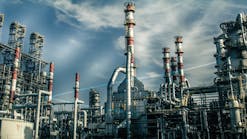Dow Chemical Co., Midland, Mich., will spend about $4 billion over the next 5 years to expand its US petrochemicals manufacturing business as part the company’s next phase of comprehensive investments in projects designed to take advantage of low-cost US shale gas feedstock (OGJ Online, Apr. 19, 2012).
Once completed, the 5-year capital spending program extend Dow’s 10-year, US growth-focused investments in manufacturing and infrastructure to more than $12 billion, the operator said.
The $4-billion investment plan will include the following main US projects scheduled for phased startup beginning in 2020:
• A 500,000-tonne/year capacity expansion of the recently commissioned 1.5 million-tpy TX-9 ethylene cracker at Dow’s more-than 4 million-tpy olefins manufacturing complex in Freeport, Tex., to bring total TX-9’s ethylene capacity to 2 million tpy—the world’s largest ethylene unit.
• Construction of a 600,000-tpy polyethylene unit based on Dow’s proprietary Solution Process technology at an unidentified US Gulf Coast location.
• Additional unidentified investment projects designed to benefit from shale gas economics designed to enhance feedstock flexibility and reduce volatility from the advantaged shale feedstock.
Broader projects under the plan include:
• A series of investments to strengthen the company’s polyurethanes business that, alongside infrastructure enhancements, will involve works to drive downstream specialty polyols and systems growth.
• A series of incremental debottleneck projects across Dow’s global asset network—but mostly in North America—to expand polyethylene output by 350,000 tpy.
• Construction of a catalyst production unit for key catalysts licensed by Dow subsidiary Univation Technologies LLC.
• Construction of a 450,000-tpy polyolefins plant in Europe to maximize Dow’s ethylene integration in the region and serve growing demand for high-performance pressure pipes and fittings, as well as caps and closures applications.
The company said it also will invest $400 million to support transformation of its Midland manufacturing operations to enable further synergies from the integration of Dow and Dow Corning’s manufacturing operations following the recent restructuring of Dow Corning’s ownership.
The positive US investment environment, its skilled workforce, and competitive feedstock prices are primary drivers behind the proposed spending program, according to Andrew Liveris, Dow’s chairman and chief executive officer.
“The Trump Administration seeks to drive structural economic reform across the regulatory and tax environments, fair trade and job creation—envisioning an economy that motivates US business to once again focus on domestic growth and restoring America’s long-term competitiveness,” said Liveris, adding that Dow’s newly proposed and past recent investments in the US manufacturing sector aligns with this thesis.
Dow currently is completing a series of projects in Texas and Louisiana as part of its $6-billion US Gulf Coast investment program to utilize low-cost and advantaged US shale gas feedstock (OGJ Online, Mar. 30, 2017).
Contact Robert Brelsford at [email protected].
